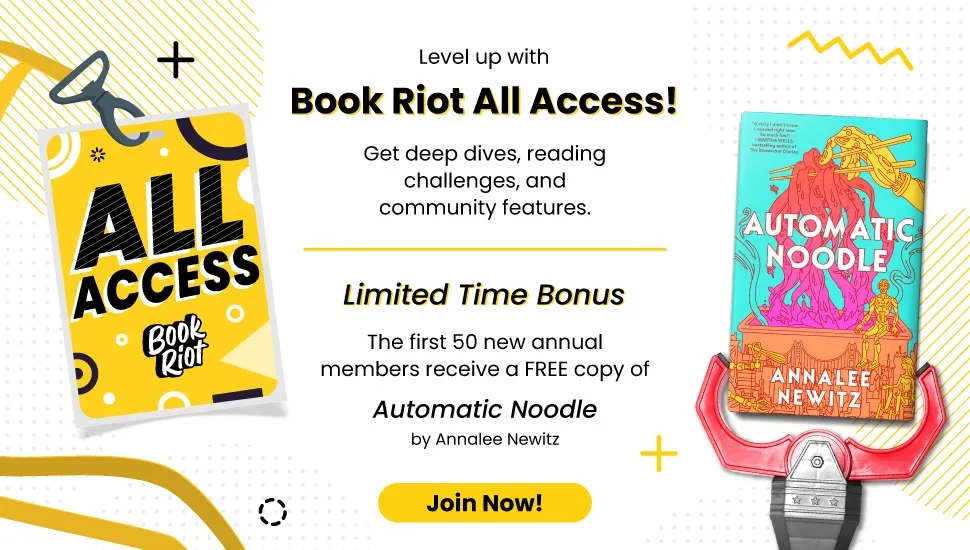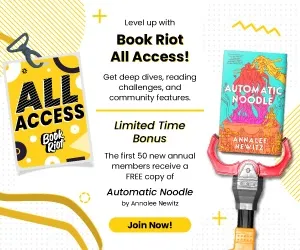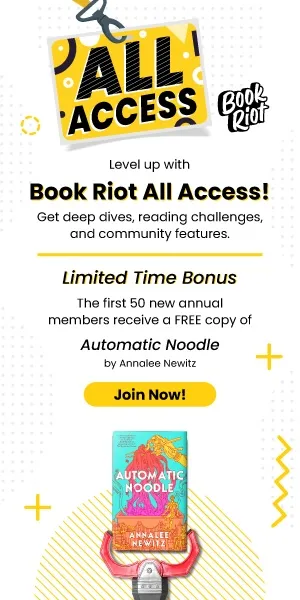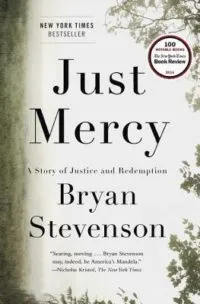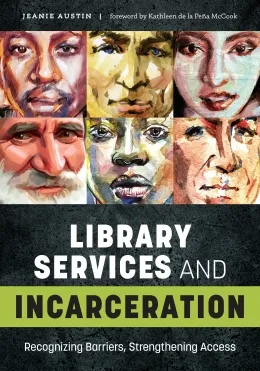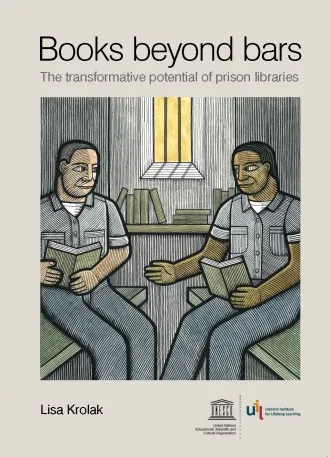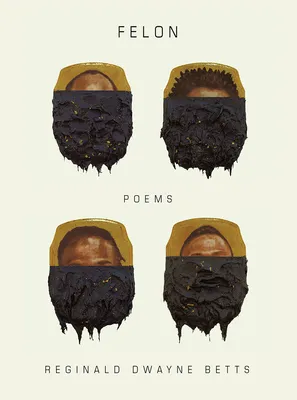
The Ever-Growing Challenges of Getting Books Into Prisons
The pandemic is making it harder than ever for organizations to get books to the incarcerated — and this is just one new development in the history of a process that was already plagued by problems.
Throughout the United States, there are about three dozen programs working to establish prison libraries and get books to incarcerated populations. It’s no easy task: most rely on donations and volunteers to keep going, and prison systems often all have varying and often-changing rules.
But the work these organizations are doing is vital. The majority of the people who are in prison are coming back into society, and they need to be able to reenter and thrive. Anyone in prison deserves to have access to entertainment and education. As activists fight for improving conditions in prisons and work to break down the prison industrial complex, getting books and education into prisons is a vital step.
“Prison libraries tend to be poorly stocked, and access limited,” says Vicki White, president of Chicago Books to Women in Prison (CBWP), a nonprofit all-volunteer organization that distributes paperback books to incarcerated women and trans people. “I’ve seen schedules posted at a prison where access was something like half an hour once a month.”
People who are incarcerated often lack the resources to buy books for themselves, and so these libraries are the only access they have to entertainment and education. Books-to-prison programs provide them books free of charge, books that then become theirs. And often, these books are then passed on to other readers, or become part of the prison libraries themselves.
“It may feel like a little thing, to give books,” says Rebecca Ginsburg, director of the Education Justice Project. “Yet, while we work on those bigger structural changes, we need to make sure that the people who are currently locked up behind bars have what they need to survive, and to grow, to develop, and thrive.”
The Impact of COVID-19
Prison libraries were inadequate already, and under the COVID-19 crisis, the situation has grown painful. The Equal Justice Initiative writes that incarcerated people are infected by the coronavirus at a rate more than five times higher than the nation’s overall rate; that the death rate of inmates is higher than the national rate; and that as of January 7, 2021, more than 433,000 incarcerated people and staff had been infected and at latest 1,960 had died. These numbers are already astonishing, and they do not account for the fact that jails and prisons are only conducting limited testing.
As these numbers are paired with overcrowding and the general poor health that accompanies prison conditions, many prisons have taken steps to curtail the spread of COVID-19. This has meant the closure of prison libraries across the U.S. The number of books prisoners could keep in their cells was already limited, and now their access to libraries has been cut off. While many can still access legal information, most have been cut off completely from any other book access.
“23/7 lockdowns have become prevalent,” shared White. CBWP has received many letters from prisoners begging for books as a result.* Brooke in Alabama wrote: “As you know, we are in a crisis and we are locked down for 23 hours a day in our cells. ANY kind of books would be greatly appreciated!” Cherie in Georgia wrote: “The books really help keep my mind bizzy. Right know it would be greatly appreciated we are on lockdown right now and we are only allowed out for an hour a day.” Karen in Florida added: “Right now your books are such a blessing to us. Our movements are restricted and we are spending most of our time in the dorm. We aren’t allowed to visit the library, so all donations are welcomed by us all.”
And yet CBWP, like so many other books-to-prison organizations, was cut off from its space for months, also for safety reasons. Even once they gained access in mid-September, it’s a small space, and so they could only have tiny groups come together — a maximum of four people, twice a week, for only two hours. They are behind on answering letters by roughly six months.
“At exactly the time when books are more important than ever,” White shares, “during this pandemic in which some kind of escape through books is so needed, access is more limited than ever.”
The collection and distribution of books into prisons took a serious hit across the board when COVID-19 shut down the country starting last March. Between fears of the virus transmitting on surfaces such as book covers, and the inability to access volunteer headquarters, these book-to-prison organizations were shut down for months.
Most of them have found new ways to function — but many of these new systems are just ways of putting the work once done by larger squads of volunteers, including new members or people just stopping in, onto the shoulders of a select, core group of hard-working, loyal volunteers.
Chris Satterwhite is cofounder and an active volunteer of the Prison Books Project, a nonprofit organization that sends books to prisoners across Florida, funded by its used bookstore, Open Books.
“COVID-19 probably put the project initially back around two to three months,” said Satterwhite. “The pandemic has hit in a period when we were at our best organizationally, and people have been generous to us over the past few months. But it has slowed our turnaround.”
The project once had two packing sessions each week, and they were often helped by big groups of external volunteers, including local students, Girl Scouts, and other people looking to get involved. Now, they’re limited to tiny groups of three, and are only using a small group of trusted volunteers to keep things safe.
DC Books to Prisons is a 21-year-old nonprofit that sends books to incarcerated folks in 34 states, plus DC residents in federal facilities. Like many of these organizations, they receive letters from prisoners requesting specific books, and do their best to fulfill those requests. But their model has been limited in the last year: they were forced to stop operations for a couple months when their headquarters were closed.
“We have distributed our book-sending processes across a small-number of long-term volunteers who send from home,” says Jackie Snow, a volunteer. Snow handles a lot of the African American fiction and nonfiction, and comics and manga. While DC Books to Prisons has been able to catch up to the letters they’ve received, she emphasizes that because each volunteer sends from their own limited collection, it can be difficult to match requests.
Already Existing Challenges
Even before the pandemic, getting books into prisons was hardly an easy process. The difficult and often unpredictable review processes, which vary widely between individual prisons, jails, and systems, made it very difficult to get books to prisoners.
Prison officials are allowed to censor or ban reading material that would threaten security in the prison, by inciting violence, for example. But these bans are often biased in ways that organizers find troubling.
For example, volunteer Snow is consistently frustrated by blanket bans around urban novels. The claim is that any fiction centering gangs or violent crimes could encourage violence in the prison — but in application, these rules tend to be charged with racist and socioeconomic bias.
“These are usually books by and about Black Americans in cities, that may involve gangs, drug dealing, or some level of violence,” she says. “But while those are rejected, books like The Godfather don’t even raise an eyebrow.” Snow is constantly looking for books by Black writers that might allow urban people of color to see themselves depicted, but that won’t be flagged in the review process.
Books, fiction or nonfiction, that focus on subjects such as slavery, race, racism, and lynching are frequently likely to be banned while other texts are allowed. Wisconsin, for example, bans Ralph Ginzburg’s 100 Years of Lynching but allows Mein Kampf. Books are often banned because they could “incite violence,” but crime and legal thrillers that contain violence often enter the prison without being flagged. Meanwhile, the Equal Justice Initiative lists Just Mercy by Bryan Stevenson, Kindred by Octavia Butler, and Slavery by Another Name by Douglas Blackman as just some of the books that have been banned by prisons.
While it’s terrible to see books become banned — particularly as the decision can be relatively permanent — there is one sliver of a silver lining to strict “banned books” lists, in that they at least allow for clear guidelines. Too often, prisons and jails use strange and arbitrary restrictions that change often and are difficult to follow, resulting in entire boxes of materials being rejected for small or unexpected reasons.
Open Books has experienced a couple unexpected challenges, and luckily have been able to challenge almost all of those cases in order to get the books into prisons. But nevertheless, the reasons for rejection are often mystifying and frustrating. An American Sign Language book was rejected, and at another point, a Dutch-English dictionary.
“Really, it just seems at the whim of whoever happens to be getting the mail that day,” says Satterwhite. “For the most part, what we’ve experienced is there’s almost no rhyme or reason for what gets banned and what gets censored.”
The Prison Book Project recently published Things to Do While You’re Waiting by Bob Gerold, a book providing resources and advice for prisoners preparing to reenter society. But it was rejected. It gave advice for how to start a business — an appealing option for incarcerated people, who can often lack SSN cards and other ID, and who can struggle to find viable work options with their history and lack of experience. But a prison said that because prisoners weren’t allowed to start businesses while still in prison, they couldn’t allow the book. Satterwhite says they plan to print a new version that stipulates it’s just advice, but was frustrated at the result.
Before Snow sends in her books, she has another volunteer do quality assurance — anything from water stains to a forgotten bookmark could get a book flagged, and often if one book is flagged, the entire package will be rejected. Organizations have to dedicate much of their time simply to keep up with shifting regulations, which vary from prison to prison and can change on a dime. Some states have made the process itself so difficult that DC Books to Prisons can’t send to prisoners in those states.
Jeanie Austin, the author of Library services and incarceration: Recognizing barriers, strengthening access (ALA, Summer 2021), added: “Librarians experience a real range of difficulties bringing in books from the public library side — no writing, watermarks, anything.” One group was told that they now can’t send books wrapped in anything but white paper. Meanwhile, communication can be severely lacking when rules change, sometimes coming only after the first rejections have come through. It makes these rules difficult to follow. “Those regulations become part of a librarian’s job,” they said.
“The target is constantly moving, and we’re constantly trying to keep up with it,” Snow shared. The rules can be more particular than we might anticipate. Prisons don’t allow any nudity, which probably makes sense in theory to many readers. But this rule has been applied to everything from Trans Bodies, Trans Selves edited by Laura Erickson-Schroth, to medical dictionaries, to art books depicting “The Birth of Venus.” DC Books to Prisons once saw a book rejected due to a naked baby Jesus.
“Sometimes the process feels a little broken,” says Ginsburg. Her organization depends on its partners to facilitate their delivery of instructional materials such as books and DVDs. “I understand that they’re trying to fix it. A more transparent process with a clear appeals process that has integrity will facilitate the delivery of materials and the access and a distribution of materials within the prison.”
Fighting to Make it Better
Rebecca Ginsburg is an associate professor of education policy, organization, and leadership at the University of Illinois, and the director of the Education Justice Project, a comprehensive college-in-prison program that provides academic programs to incarcerated individuals. They have about 75 students any given semester, but the books and materials are often shared throughout the prison. The books help to form a formidable prison library, which is vital, as the waiting list to get into the ABE and GED programs is often made up of hundreds of people.
In 2019, without warning, prison administrators raided EJP’s library and took out over 200 titles, most of which were concerned with African American history and culture, civil rights, and slavery, as well as some LGBTQ titles and some titles for children of incarcerated parents. EJP only found out when their students told them what had happened. They were forced to fight for months and eventually get the Illinois legislature involved to return the books to the shelves.
Freedom to Learn was a campaign that rose out of that incident. This campaign goes beyond battling book banning, destruction, and censorship, to fight for something greater.
“We advocate for better conditions for our programs and our students. We’re going to go further and bring other issues up,” said Ginsburg. These issues include transfer holds — making it so that a prisoner in the midst of a program to get their degree cannot be suddenly transferred to a different prison — as well as the ability for students to keep their education materials in their own rooms.
“Long before we had texts, we had people curious about the world,” Ginsburg added. “That’s not something I would want to deprive anybody of simply because they are in prison.” It’s vital that people fight to allow prisoners to have a wide selection of books, through books-to-prisoners programs and through robust prison libraries.
“People in prison want to learn, want to create beauty,” says Vicki White. She says that some of their biggest requests are for books on dancing or on arts and crafts such as cross-stitch, drawing, and crochet, as well as puzzle books.
Satterwhite’s top requested materials include dictionaries, Black history books, urban novels, and Spanish-English dictionaries.
“Our biggest request outside of dictionaries are sci-fi books,” says Satterwhite. “They just want to get as far away as they can. It’s a mental escape, to help save their sanity.” Snow adds that some of DC Books to Prison’s most popular areas include comics, westerns, and thrillers.
People like to stay connected with their religion and spirituality in prison, and will also request books that will help them understand their health, nutrition, and exercise — or even medications, as they’re often not given detailed information on what they’re taking. People’s interests range far and wide, and the Prison Book Project has also had requests for things like nuclear physics. Books can help root prisoners who may feel lost due to language or cultural differences. They can keep people calm, be an opportunity to write and create. They can provide a topic of discussion with fellow prisoners, friends, and family.
In other words, people in prison are just like people not in prison: they have a wide range of interests, and have many different, equally valid reasons for wanting to read.
“I think it’s important to make books available to anybody who wants books,” says Ginsburg. “People who live in prisons aren’t exempt from the human urge to read, learn, grow, and develop. We all benefit when as many people as wish to have access to information and knowledge do have that access.”
“I think that a lot of people who are readers can probably think of a book or two that radically changed the direction of their lives,” says Satterwhite. “We’re hoping that we can be a project that sends that book to somebody that has that impact.”
Lisa Krolak is Chief Librarian of the UNESCO Institute for Lifelong Learning in Germany and the author of Books beyond Bars: The transformative potential of prison libraries. Krolak hears different things from around the world about the role of books and reading in prison, and has worked to lecture and share her views about how to improve opportunities for the incarcerated around the world. She says that one of the most important things that books give prisoners is autonomy. “Life in prison is so structured,” says Krolak. “You are told what to do all the time. Using a prison library is one of the few opportunities where the prisoners can choose their own materials.”
Connecting Prison and Public Libraries
“Having a prison library is a chance for the prisoners to experience lifelong learning,” says Krolak. “A community space that they might not have experienced outside, but that they can get to know inside, and then use once they leave.” Prison librarians should be equipped for this, and should be trained to run such a space.
Unfortunately, they often do not have the budget, time, permissions, or training to do so. Prison librarians are often isolated professionally from public librarians. They aren’t always trained to run a library. Sometimes, they’re prison guards doubling up as librarians, juggling it among many other tasks, or incarcerated people themselves.
“Prison librarians are under some of the same kind of technological restrictions that people who are incarcerated are under,” explains Austin, “and sometimes they’re performing three different jobs when they’re one person, serving hundreds of people. They’re handling leisure reading, law library, reference.” That pressure has only increased during the pandemic, as some prison librarians have taken paper requests for materials and literally had to photocopy them and bring stacks of photocopies to the units.
Most prisons don’t have a specific budget for their libraries. “That means that libraries are vying for funds coming from the commissary sales side,” said Austin. “It’s an exploitative system where the librarians are positioned in this dynamic of taxing people who are making 26 cents an hour in order to buy library books.” Ideally, a federal mandate could obligate prison systems to fund recreational reading, but in its place, access to the public library and its resources could be tremendous.
Already, public libraries have programs where they are trying to help: supporting books-to-prisoners groups, doing programs around mass incarceration, forming partnerships with nearby jails and prisons, forming interlibrary loan programs between public and prison libraries. Austin also mentions robust reference-by-mail programs, where public librarians answer reference questions from people inside through the mail.
In coordination with other librarians, Austin has been identifying library systems answering mail from incarcerated populations, and encouraging new library systems to do so — actively building out a network. Austin and New York Public Library’s Correctional Services librarians support libraries in initiating this kind of work.
“We’re trying to ease the transition as much as possible,” Austin says, “because we know that many libraries are already receiving letters from people inside, but they might not get answered, because librarians don’t know what’s okay to send them and what isn’t.” Their dream is that every state and area has a library doing this work. “There are definitely states where it’s not happening,” they said, “but there are people in prison everywhere, and it’s a very direct way to build information access.”
Austin can list dozens of ways that public librarians and regular people can help to make book access easier — from making flyers about the public library’s resources, to providing information about how to get a public library card upon release from prison. They also mention that making prison or jail identification an acceptable form of ID to get a library card is crucial.
“Yet the work of many public libraries supporting people who are incarcerated is not recorded,” said Austin. “Fortunately, new efforts are being undertaken to bring this work together.”
“So much of what the library already does is going to be useful for people in reentry,” Austin says. “I don’t want to normalize incarceration, but we have to acknowledge that it’s become normal in a lot of ways, so bring that information into existing library programs.” If you’re doing an employment workshop, talk about second-chance employers in the area. Support prison librarians in doing coordinated programs, or “one city, one book” programs for people inside and out. Anything that the library already does that can be expanded to help the people inside prisons and jails will be crucial.
“We need to make connections between libraries inside and outside of prisons,” Krolak says. “And then, we need to bring in programs and volunteers.” She believes that these connections are crucial for expanding the possibilities for prison libraries.
“Norway has a system,” she shares, “where the prison library is a branch of the public library system. For me, that is best practice. If you are in prison, you have the same right to modern library services as everybody else — the prisoner is deprived of liberty, full stop, otherwise, he’s a citizen.”
Libraries as modern institutions are treasure troves of information that can serve a vital purpose simply by educating the public and providing social support.
“Often prison librarians aren’t allowed to talk about their work or are hushed,” Austin explained. “Either because something they’re doing that’s amazing might get compromised if it’s made public knowledge, or because the prison system has explicitly told them that they’re not allowed to talk to journalists, authors, etc.” This is crucial, they emphasize: while prison librarians are part of the institution, embedded within it, and so subject to its values and its administration, public librarians are in a better and more powerful position to argue for book access and raise public awareness about these issues.
“We have to, as librarians, connect the conversations that we’re having around policing to incarceration: there’s a straight line between the two,” says Austin. This is particularly true for queer and trans people, especially BIPOC queer and trans people. “Not only because of these histories of policing and exclusion, enslavement, violence, and death, but also because of those systemic oppressions that occur along the lines of intersections for queer and trans BIPOC” — from being noticeably non-normative in public to the danger of being outed or being out to the difficulty of getting a job.
“My goal is not just to work at the tail end of incarceration,” they said. “I think libraries can imagine ways to increase social supports and resources for people we know are heavily impacted by these systems.” As librarians have more and more conversations about mass incarceration and what they can do, Austin is excited by how they are thinking seriously about what the role of the library can be.
Debating Tablets and Technology
Even more challenges are on the horizon as prisons recently attempted to monetize prison libraries by replacing access to physical books with ereaders. Some of these tablets are “free” but then require prisoners to pay steep prices for actual access to books — for example, $11.99 for The Federalist Papers, or $2.99 for Moby Dick. One scandal arose when it became clear that a company was charging prisoners even to read books that were in the public domain. The libraries are also extremely limited, which again brings up serious concerns of unjust censorship and lack of access. One of the justifications for this curtailment of physical books was, again, security, under the idea that direct donations could allow for drug smuggling; other justifications around security are similarly difficult to believe.
The introduction of tablet technology into prisons is a difficult one. Organizers have many concerns about the introduction of tablets, particularly when they are presented as a replacement for library services or the prison library all together.
Ginsburg emphasizes that tablets are in theory a good idea — as long as they are free and not replacing any of the already existing resources. Prisoners need to become familiar with technology, and in this technology and innovation filled world, they need to know how to use it and how to function when they get out. And in remote prisons, they could mean precious access to education.
“Once released, prisoners have to be able to cope,” Krolak says. “If you’re in prison for five years, and have no access to digital technologies, how can you get out of prison and understand what’s going on? We live in a digital world, they come out of a digital world, and they are released into a digital world.”
Tablets and technology, if used correctly, have the potential to be crucial to education and reentry — and they can open the door to exciting possibilities.
“I hear of librarians having conversations about whether it’s possible to make libraries’ e-resources and ebooks available on tablets within the prisons,” Austin says. “There isn’t an established example of it happening, but it’s inspiring. It reflects what I think is a larger shift in librarianship: thinking of people who are incarcerated as our public, not somehow separate from the public that the library is already serving.”
Austin shares the story of one librarian in particular doing great work. Dan Marcou, at Hennepin County Library, has added an “email-a-librarian” button to the kiosks at a local prison. People inside can hit this button and email Marcou to make direct book requests. Since the population has decreased in that area with COVID-19-related releases, Marcou has been able to fulfill requests from the people still inside, allowing for direct access.
“It really reflects the kinds of relationships that can be built when a public library program endures,” says Austin.
But the choice to monetize this access is something else entirely, as is the choice to cut off physical books and educational resources.
“It should be free,” Ginsburg emphasizes. “It should be another ultimate delivery mechanism or phonology for materials, but charging, monetizing, making it exclusive, that’s unacceptable.” She adds that there are already class systems within the prison, and that this will only emphasize wealth inequality by limiting access to the people who need it the most.
“There are so many different industries that are built around, are catering to, committed to, making profits for shareholders on the basis of the needs, interests, and misery of people who are locked up,” adds Ginsburg. “It’s something to be avoided at all costs.”
“This is not something we should be monetizing,” emphasizes Snow. “If they wanted to provide everyone with ereaders and easy access to any book, I’d be onboard with that. But in reality, this is a money-making venture with a couple of companies that are gouging prices and offering really, really limited access to books.” Snow fears that this will continue to get worse. While some systems have rolled back their ereader plans, Snow worries that slashed budgets will result in making this a continuing uphill battle.
Austin also presents serious privacy concerns.
“Everything that a person does on their tablet is being run into these databases that can then be assessed and analyzed,” Austin said. In some cases, prisoners don’t even receive print mail anymore — one company named Smart Communications digitizes and scans mail for prisoners. “But it advertises itself to the prisons as an AI analysis tool,” says Austin. “Access to the court is protected, and so legal mail is supposedly not going through those systems, but because they’re a private company, they don’t have to give any information about how long they’re retaining records, or what they have.”
Ginsburg emphasizes that going all-remote with in-prison education will never be the answer. Whenever possible, education programs and books-to-prison organizations should include contact with the external world.
“Part of the education that goes on in any prison education program is the education of those of us from the outside, who are forced to walk in through the gates, see what happens there, meet those people, and go back to our campuses and do the hard work of changing minds and attitudes around incarceration,” said Ginsburg.
How to Help — and Why You Should
There are so many ways to help these organizations. The obvious way is to donate books, particularly in the categories of books that they often need — dictionaries, sci-fi, and such other lists.
“Even if you go to the dollar store and just spend $10 and bought every dollar-store dictionary that was up there, that would be great,” says Satterwhite.
Because of the tight, strange rules around books getting into prisons — some only take new books, most reject hardcovers — the organizations encourage sending them new books off of their wishlists at independent stores or Amazon. Chicago Books to Women in Prison encourages people to buy off their often-updated list at Women and Children First bookstore. Open Books has a list of their needs on their site, and DC Books to Prisons has a wishlist through Politics & Prose.
These are just a few of the books-to-prisoner programs doing work throughout the United States to increase book access to prisoners — if you do a few minutes of googling, chances are you will find a program in a city near you. Meanwhile, other organizations across the U.S. such as the Education Justice Project are striving to make change in other ways as well. Austin cites the Million Book Project, founded and headed by poet and lawyer Reginald Dwayne Betts, author of Felon, and A Question of Freedom, among others. The Million Book Project’s goal is to build a 500-book Freedom Library and place it in prisons in every state in this country as well as Washington, D.C., and Puerto Rico.
For any of these organizations, a dollar goes a long way. One of the biggest expenses of books-to-prisoner organizations that people don’t immediately think about is postage: they need the money for stamps, envelopes, etc. Money also allows organizations to buy books to specifically match the requests they receive from prisoners.
While so many are isolated in prison, unable to contact friends and family, they often become forgotten. “Do you want them to see the world as a really hostile place that doesn’t care about them, or do you want them to have at least the knowledge that some people care?” Satterwhite asks. “We’d like to be those people.”
Ginsburg agrees. “People who are in prison are still part of our society, our communities, our families.”
Open Books has been around for 20 years. One person in particular, a man by the name of Mike Oliver, came to Open Books to work with them after getting out of prison.
“He just recognized the value of things like this, and the value of people opening up their hearts,” he said. Oliver brought his computer skills to the Prison Books Project, helping to streamline their operations into a “well-oiled machine.” He died not long afterwards.
“It was like his parting gift to the world was this one thing,” he said, “and in us giving him a second chance, he was able to find his value and worth, and even reestablish him with his family, to say that he did something good in his life and wasn’t judged by just the bad thing that he did in another part of his life.” Satterwhite credits Oliver with the success of Open Books today.
Satterwhite’s father and stepfather were both once in prison. He used to send his stepfather books, particularly sci-fi. Unfortunately, his stepfather was killed while still inside.
“When he was killed, the Prison Book Project is where I put most of my energy for a long time,” said Satterwhite. He thinks it’s vital that people realize that the incarcerated are family members, friends, neighbors, to help to break the prejudice against those inside. “If we’re honest with ourselves,” he emphasizes, “there are circumstances in which all of us, if the systemic forces were turned against us, could have gone to prison as well — because we were at the wrong party, or took a wrong turn.”
“Prisoners are not given the second chance they need,” he says. “Society doesn’t do it as often, there’s so much stigma against prisoners in general.”
By donating books to incarcerated people, and by supporting these organizations, you are not only helping to give people a second chance, but are also acknowledging that society sees them and their struggles, and that we want to help.
“Books are just good things to give into people’s hands,” says Ginsburg. “To help them, to mitigate the horrors, to mitigate the violence of incarceration. Books allow people to escape, grow, learn, dream and aspire, and feel hope. So give books to people, and help organizations that get books into the hands of people who are incarcerated.”
For more information on books in prisons, check out:
- Why and How Censorship Thrives in American Prisons
- Reading Time: The Importance of the Prison Library
- Donate Your Books to Prisons: What, Why, and How
- Prison Ereaders and Tablets Should Be Free During COVID-19
*Letters provided by and quoted with permission from CBWP.
